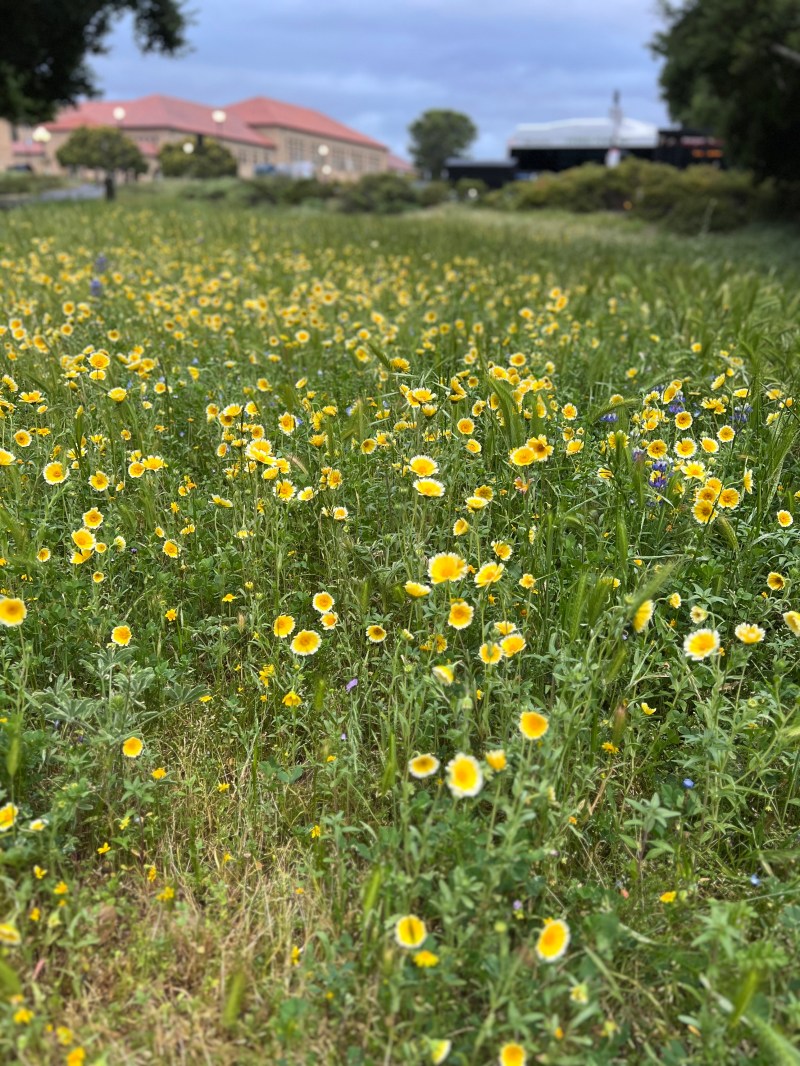Spring has sprung, and wildflowers are blooming. They border campus roads and carpet grassy spaces. While some flower beds are routinely manicured, these wildflowers grow freely.
According to University horticulturist Gahl Shottan, the wildflowers are seeded every year to guarantee a better bloom.
Shottan said that the seeds are typically planted in the more “naturalized spaces” such as along Campus Drive and underneath trees in the Oval “ears.”

Wildflowers grow under the trees between the Oval and Lathrop Library (PHOTO: SARAYU PAI/The Stanford Daily)
According to Mary Nolan, Grounds Service Manager, a “California coastal native wildflower mix” is used. Although seed makeup of the mix varies yearly, it tends to include a range of bright wildflowers like the iconic orange California poppy and pink Clarkia.
Other than the seeding, the Grounds team adopts a hands-off approach to wildflower maintenance.
“We broadcast the seed and just let nature run its course,” Nolan said.
According to Shottan, wildflower blooms depend in part on the weather. “The more rains we get in the winter in California, the more wildflowers we will see bloom the following spring,” Shottan said.
The wildflowers may also be cultivated for decorative purposes, such as the red “S” in the Oval.
Shottan reported that the “S” endured the winter for the first time thanks to the installation of deep scarlet Heuchera plants. The Heuchera plants may not survive the summer sun, so were swapped out for red petunias recently, according to Shottan. The S is surrounded by dusty blue-green fescue grasses.
Apart from their whimsical beauty, the wildflowers support Stanford’s pollinators. Tadashi Fukami, professor of Biology and Earth System Science, wrote that “almost certainly, wildflowers support a diversity of pollinator populations on campus, including bees, ants, butterflies and hummingbirds.” According to Fukami, the wildflowers also support the microorganisms living inside pollinators.
“A few years ago, we discovered a new species of bacteria, which we named Acinetobacter baretiae, from the mouth and gut of a honey bee that was visiting flowers in front of the Gilbert Biology building,” Fukami wrote.
Jeffrey Dukes Ph.D. ’00, senior staff scientist at the Carnegie Institution for Science, wrote in an email to The Daily that some wildflowers, like lupine which is a legume, also aid in soil fertilization.
“[Legume] plants work with bacteria to transform nitrogen gas in the air into forms of nitrogen that get chemically incorporated into plants, microbes and eventually soil,” Dukes wrote.
Some students admire the otherworldly nature of the wildflowers.
“I don’t see them often, but whenever I see wildflowers at Stanford, they feel like an escape from a college campus. I always have to fight the urge to pick them, because they’re so pretty,” Sumedha Kethini ’27 said.
